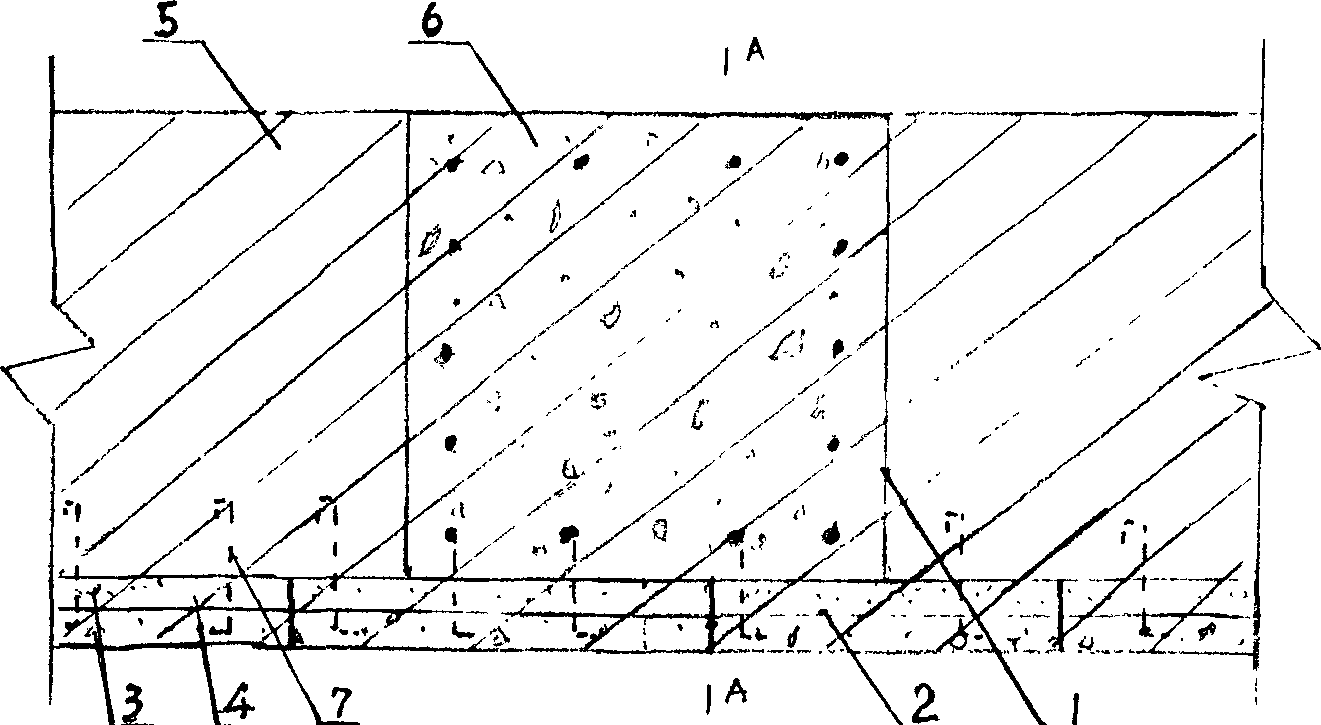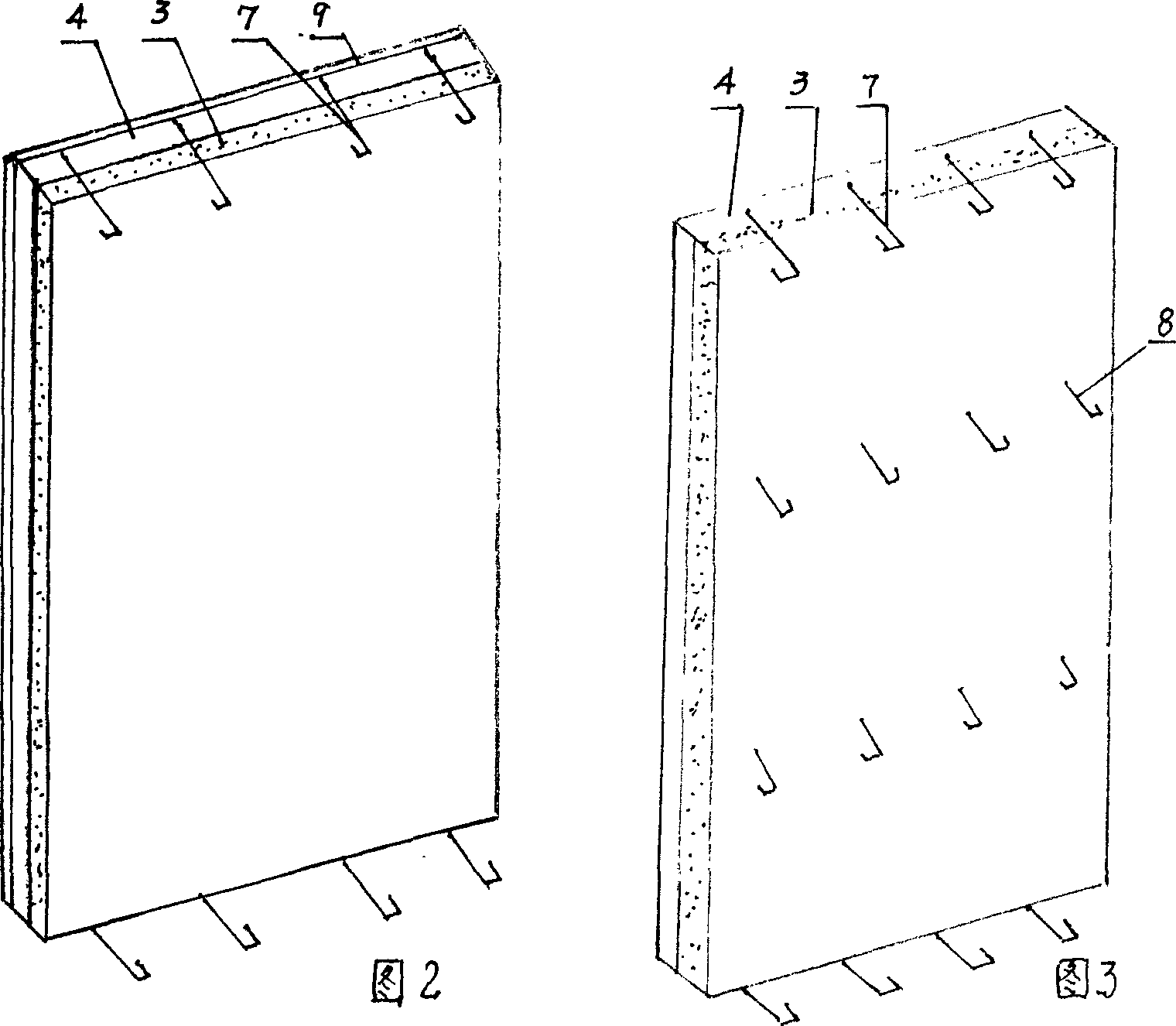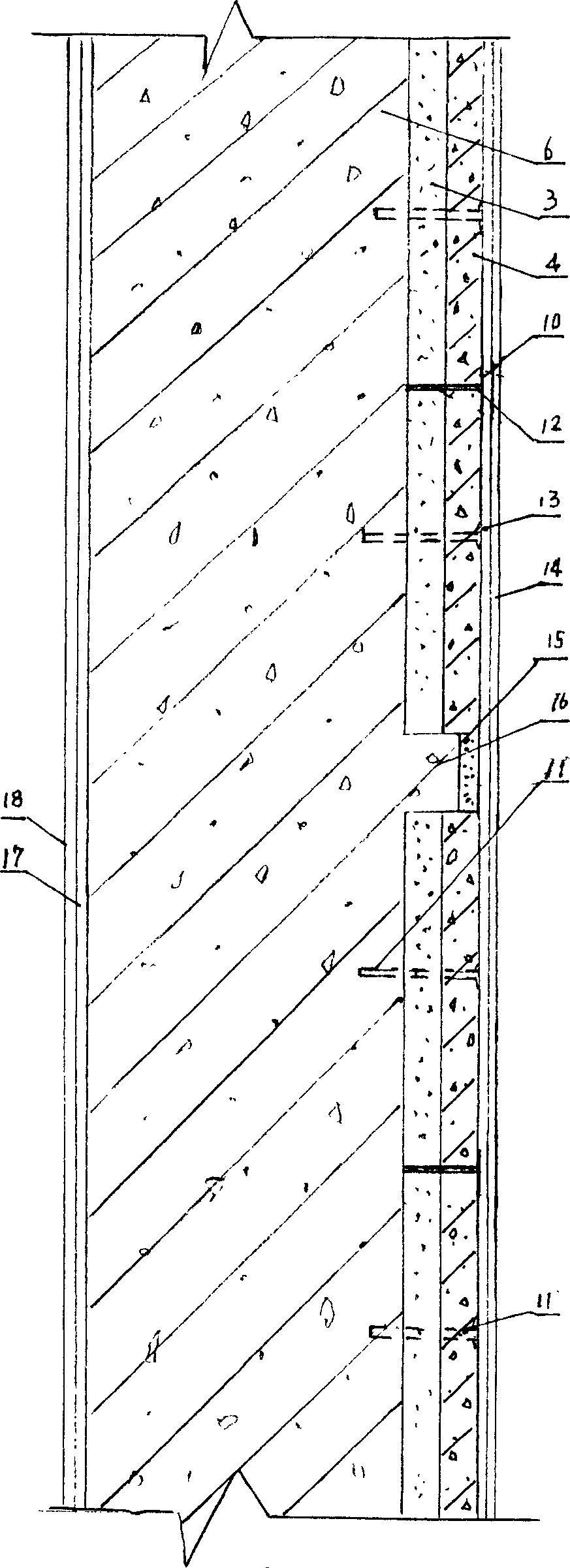Energy saving composite self heat insulation wall for building
A building energy-saving and composite thermal insulation technology, which is applied in thermal insulation, construction, building components, etc., can solve the problems of thickness, difficulty in uniformity, large energy saving investment, poor impact resistance and durability, etc., and achieve easy control of uniformity and energy saving investment The effect of less and long service life
- Summary
- Abstract
- Description
- Claims
- Application Information
AI Technical Summary
Problems solved by technology
Method used
Image
Examples
Embodiment 1
[0012] Building energy-saving composite self-insulation wall (see figure 1 ), there is a base wall 1, and there is a prefabricated composite thermal insulation board layer 2 fixedly connected with it on the outside of the base wall. The force wall structure fills the wall base wall or the special-shaped column frame structure fills the wall base wall. The brick-concrete structure base wall is composed of wall materials and mortar masonry, cast-in-place ring beams and structural columns. The frame Structural filling wall base wall is composed of wall materials and mortar masonry, frame beams and columns connected as a whole. The frame structure base wall with shear wall also includes shear wall, prefabricated composite insulation board layer 2 It is formed by splicing prefabricated composite thermal insulation boards, and the prefabricated composite thermal insulation boards (see Fig. 2) are formed by composite bonding of concrete boards 4 and thermal insulation boards 3. Its ...
Embodiment 2
[0014] The difference from Embodiment 1 is that the prefabricated concrete slab 4 is pre-embedded with a horizontal tie bar 8 with one end passing through the thermal insulation board 3 for fixed connection with the base wall (see FIG. 3 ). One end of the horizontal tie bar is placed in the masonry mortar joint of the foundation wall or connected with the cast-in-place concrete beam, column or shear wall.
Embodiment 3
[0016] The difference from Embodiment 1 or 2 is that the base wall and the prefabricated composite thermal insulation board are connected by expansion screws 11 anchor bolts (see Figure 4 ), for auxiliary and enhanced connections, or not.
PUM
 Login to View More
Login to View More Abstract
Description
Claims
Application Information
 Login to View More
Login to View More - R&D
- Intellectual Property
- Life Sciences
- Materials
- Tech Scout
- Unparalleled Data Quality
- Higher Quality Content
- 60% Fewer Hallucinations
Browse by: Latest US Patents, China's latest patents, Technical Efficacy Thesaurus, Application Domain, Technology Topic, Popular Technical Reports.
© 2025 PatSnap. All rights reserved.Legal|Privacy policy|Modern Slavery Act Transparency Statement|Sitemap|About US| Contact US: help@patsnap.com



